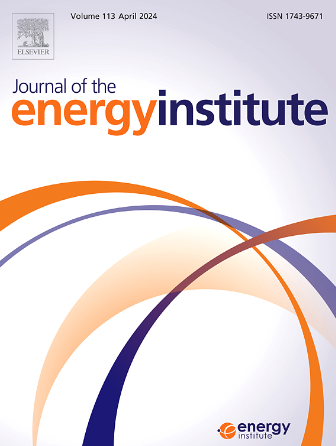Innovative non-thermal plasma treated NiMo-ADM zeolite catalyst for dry reforming of methane
IF 5.6
2区 工程技术
Q2 ENERGY & FUELS
引用次数: 0
Abstract
In this study, a simple and effective Non-thermal Plasma (NTP) treatment was used to produce Ni-Mo catalysts, with Attapulgite (ATP)-Derived Mobil Five Instructure (MFI) zeolite (ADM) as the support. The catalytic activity and resistance to carbon deposition in the DRM reaction were separately investigated in terms of the effects of adding Mo and the NTP treatment. Structural characterization confirmed the successful integration of Ni and Mo species within the attapulgite-derived MFI framework. Catalysts containing Mo exhibited significantly higher initial catalytic activity compared to Mo-free ones. H2-TPR results demonstrated that the addition of Mo strengthened the metal-support interactions, and NTP treatment increased the proportion of metals in the catalyst that could function as active sites. CO2-TPD analysis showed that Mo addition enhanced the ratio of weakly basic and medium basic sites, and this tendency was further reinforced by NTP treatment. Under continuous operation for 100h, the plasma-treated Ni7Mo1-ADM-P catalyst exhibited exceptional stability with CH4 conversion rates maintained at 90.4 %. At the GHSV of 90,000 mL·gcat−1·h−1, the CH4 and CO2 deactivation rates were merely 0.011 % h−1 and 0.008 % h−1, respectively. After 100 h of reaction, the characteristic peaks of MFI molecular sieves could still be detected in the used catalysts, reflecting their high stability. Additionally, Ni7Mo1-ADM-P had a higher degree of graphitization defects, making its carbon deposits easier to remove. This study could offer a reference for further enhancing catalyst performance through NTP treatment.

求助全文
约1分钟内获得全文
求助全文
来源期刊

Journal of The Energy Institute
工程技术-能源与燃料
CiteScore
10.60
自引率
5.30%
发文量
166
审稿时长
16 days
期刊介绍:
The Journal of the Energy Institute provides peer reviewed coverage of original high quality research on energy, engineering and technology.The coverage is broad and the main areas of interest include:
Combustion engineering and associated technologies; process heating; power generation; engines and propulsion; emissions and environmental pollution control; clean coal technologies; carbon abatement technologies
Emissions and environmental pollution control; safety and hazards;
Clean coal technologies; carbon abatement technologies, including carbon capture and storage, CCS;
Petroleum engineering and fuel quality, including storage and transport
Alternative energy sources; biomass utilisation and biomass conversion technologies; energy from waste, incineration and recycling
Energy conversion, energy recovery and energy efficiency; space heating, fuel cells, heat pumps and cooling systems
Energy storage
The journal''s coverage reflects changes in energy technology that result from the transition to more efficient energy production and end use together with reduced carbon emission.
 求助内容:
求助内容: 应助结果提醒方式:
应助结果提醒方式:


